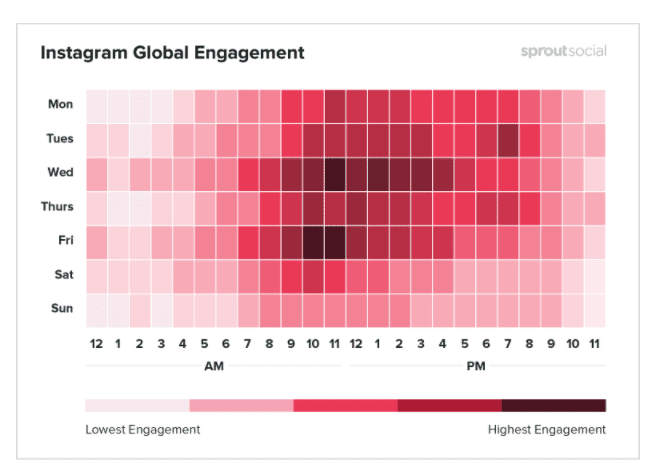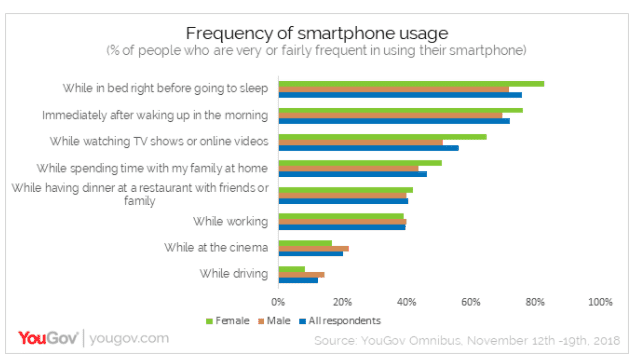Discovering the optimal time to send your next SMS marketing campaign can significantly boost your results.
But the fact that text messages have a 98% open rate means it’s tempting to overlook the importance of when you schedule a campaign.
Yes, the average person checks their mobile phone at least 50 times a day.
But you also want your customers to do more than just glance at your text. You need them to take action. So, the timing of your text messages definitely matters.
If you’ve ever looked for the answer to the question “What’s the best time to send SMS marketing campaigns?” you’ve likely come across a whole lot of “it depends.”
We can’t deny that who you are and who you’re sending to influences the best time for your text marketing messages.
That doesn’t mean we can’t tackle the question at a higher level and, more importantly, provide you with a framework to optimize your own send times.
In this report, we cover the following:
What is the best day to send texts?
When is the best time to send texts?
A framework for deciding the best time to send bulk SMS
The Best Day to Send Text Marketing Messages
Hate Mondays? You’re not alone.
The thinking goes that people are grumpier and more sleep-deprived at the beginning of the week, so Tuesdays, Wednesdays, and Thursdays tend to be the best days for SMS and email campaigns.
But is it actually true? Not exactly.
This study published in The Drum found that online sales were highest on Thursdays, narrowly beating Monday.
If we take Instagram engagement as a good proxy for overall mobile marketing efforts, we can also see that the most consistent engagement can be found Monday through Friday, 9 am–4 pm.
It’s worth noting that some businesses have found success by sending text messages on the weekend due to less competition.
But, in general, it appears that Monday and Thursday are the best days to send your SMS campaigns. The least popular day to send a text is Sunday.
The Best Time to Send Marketing Text Messages
Our friends at SimpleTexting analyzed thousands of text marketing campaigns and found a common theme.
The most common time to send a campaign is 12:00 pm, and the least popular day to send a text is Sunday. No matter the day of the week, noon remains the most popular time to send a text campaign.
They also found that text messages featuring links generated the most clicks at 12:00 pm. These results reveal that consumers take immediate action once they receive a message.
These findings seem to make sense. You want to avoid scheduling your text marketing messages too early in the morning or too late at night.
After all, you’re communicating directly with consumers, and you need to respect their personal space. You don’t want to wake your customers who forgot to turn on “Do Not Disturb.” (On that topic, be wary of time zones when sending SMS messages across the country.)
It also makes sense to avoid sending text messages during rush hour at the beginning or the end of the business day.
But looking at general mobile engagement data from YouGov, there might be an opportunity to connect with your subscribers in the evening before they hit the hay.
This opportunity is corroborated by data from SaleCycle’s 2020 E-Commerce Stats Report that shows the peak purchase time lies between 8 pm and 9 pm.
If you sell wine online, you could try scheduling your texts between those hours. If you don’t, sticking to noon is a pretty safe bet.
Although some marketers have reported fantastic results from sending their campaigns at odd times, such as 10:32 am-11:28 am or 2:31 pm – 3:23 pm. This is due to not sending precisely on the hour or half-hour when most marketing messages are scheduled.
A Framework for Deciding the Best Time to Send Your SMS Campaigns
Ultimately the best time to send your SMS wine marketing messages should be based on your business. But there are two questions you can ask yourself to decide when to send bulk messages to your subscribers.
What Do You Want Your Customers to Do?
The most helpful tip for deciding when to send messages is determining when your customers are most likely to take action.
For example, if you’re an urban winery offering happy hour specials, think about scheduling your texts for the early afternoon, so your offers will be on your customers’ minds at the end of the workday.
If you’re business depends on the success of your wine country events, it can be better to send your messages days in advance. People like to plan for their weekends, so Thursday is a great day for promoting Saturday events.
And if you’re promoting an online wine sale, you could use some of the data points we referenced above. Or, if you use Google Analytics, look at a report on what days and times your online store generates the most visitors and purchases. (This article from Hallam explains how to make this happen.)
What Type of Message Are You Sending?
If you’re sending a coupon or promo code that expires, you want to find the right balance between sending it too far in advance – leading to a lack of urgency – or sending it too late when not everyone will get a chance to act on it.
If you’re using text messaging for appointment reminders, aim to send your message 24 hours in advance if you can. That’s the best method for creating a “sticky” reminder.
On the other hand, the best practice for sending transactional texts like order confirmations or shipping notifications is to send these messages right away.
Thoughtfully answer these two questions for your business and you’ll be well on your way to the wine marketing hall of fame!
It’s Always Best to Run a Test
The beauty of direct marketing is that no matter what methods you use – SMS, email, or snail mail – you don’t have to guess what works best if you run a test.
A/B testing is a proven way to maximize the results of any direct marketing campaign. It works for testing offers, marketing copy, and the day/time you send your messages.
By sending the same message at two different times, you can use the analytics gathered from your links to determine which time drove the most engagement. You could do the same thing for days of the week too.
The best practice used by professional wine marketers is to experiment with every variable that drives the success of your campaigns. By trying different send times and analyzing your results, sooner or later, you’ll discover what works best for your customers and your business.
Key Takeaways
While we hope our advice helps put the age-old “When do I send?” question to bed, we’re not holding our breath. As wine marketers, we’re fond of continuously tweaking our approach and trying new things. Long may that live!
But if you’re looking for a concise answer, here it is:
Send your messages mid-morning or early afternoon during the work week…
…unless you know something about your audience, which you really should😊 In which case, ignore our first suggestion and…
…answer the questions above or use A/B testing to determine your optimum time slot.
Happy sending!





